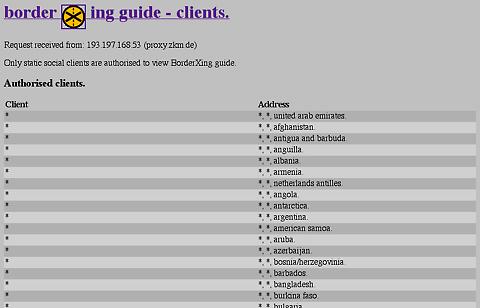
The afternoon of May 30 was clear and sunny, which probably accounted for the low turnout at the New Museum’s panel discussion Networked Equality. Too bad, because the presentations were engaging and generated a lively Q&A session afterward. More than a month later, the topics raised still seem worth discussion, especially in light of the ongoing conversation about political art and the content of Rhizome’s coverage. The speakers at Networked Equality were researchers, activists, one-time dot-com entrepreneurs and self-described nerds Ethan Zuckerman and Omar Wasow. Zuckerman discussed how the internet’s vaunted potential to increase the flow of ideas across borders of nation, race, and class had been stunted by homophily, the tendency of people to stick to like-minded groups. His project Global Voices is one effort to counter that inclination by aggregating and translating independent media. Wasow, an education specialist, emphasized that access to technology would not narrow the gap between classes, and education was the key to helping disadvantaged segments of the population become participants in a networked economy.
Zuckerman is a fellow at Harvard’s Berkman Center for Internet and Society, where he said his older colleagues—academics who already had established careers when the internet appeared-- greeted networked technologies enthusiastically, predicting earth-shattering change and falling borders. To the contrary, Zuckerman and Wasow’s peers, who helped build the early internet, approached it with a healthy skepticism. This attitude resonates with some pioneering net art works, such as those of Heath Bunting and Daniel Garcia Andujar who reacted sharply to utopian views of networked technologies. BorderXing, Bunting’s project with Kayle Brandon, offered a database with instructions on how to cross borders illegally, but limited access to that database; the project showed literally how political borders were in fact permeable, and computer networks could be just as restrictive. Andujar’s series of projects under the banner of “Technologies to the People” challenged assumptions about the freedom of the internet by investigating who actually owns or distributes knowledge online. In cross the border, Olia Lialina writes: “the easier money and goods flow across the territories of nations, the more western europe and united states close their doors to migration.” Her net drama Agatha Appears addresses the issue more obliquely, partly through the gender dynamics between naïve Agatha and the savvy male systems administrator who “teleports” her back to his apartment.
Networked Equality was one of a series of talks organized in conjunction with the recently closed “Younger Than Jesus,” which noticeably lacked explicitly political art in the vein of the examples given above. In a recent post to the list Curt Cloninger wrote: “I do think the current interest in "formal" work is a reaction (whether intentional or subliminal, probably both) against an overly politicized/pragmatic/moralizing dialogue that has often (in some circles) surrounded new media art.” Could it also be because euphoria over the internet’s border-shattering potential has faded as it has become integrated into daily life? Are there any recent art works related to the topic of Networked Equality worthy of note? Please post links in the comments.